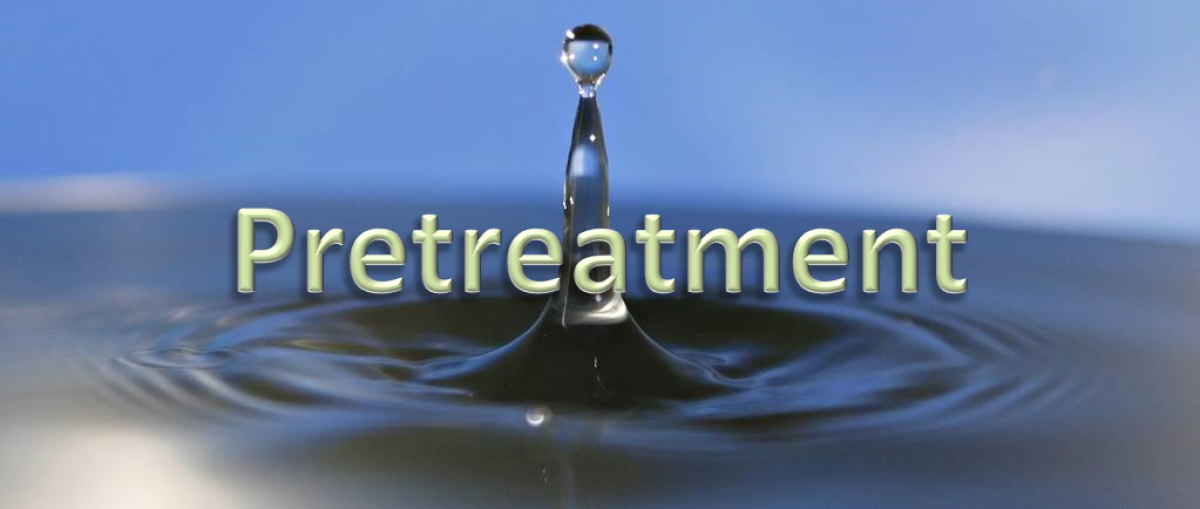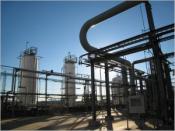Pretreatment

Pretreatment refers to the reduction, elimination or treatment of non-domestic wastewater before it's discharged to the wastewater collection system. In 1981, EPA mandated the requirement to develop and operate an industrial pretreatment program for wastewater treatment plants.
The General Pretreatment Regulations are set forth in the Code of Federal Regulations, 40 CFR 403. Under the regulations and the National Pollutant Discharge Elimination System (NPDES) permit issued by the State Division of Water Quality, Payson City has been given approval to administer a Pretreatment Program.
The Pretreatment Program gives Payson City the authority to established a Preteatment Ordinance with industrial permits, monitoring, and enforcing the requirements of the program by imposing fines for non-compliance. Contact Phillip Lundell to get a copy of this ordinance.
Goals of Pretreatment
- Prevent the introduction of pollutants into our treatment plants that will interfere with treatment operations.
- Prevent the introduction of pollutants into those plants that will pass through the treatment works and be incompatible with the environment.
- Enforce applicable EPA standards.
- Generally reduce the health and environmental risk of pollution caused by wastewater discharges to treatment plants.
Routine tasks of the Pretreatment Program
- Inspect industrial users' facilities
- Inspect and assess the proper use and maintenance of Fats, Oils, Grease and Sands (FOGS) generating businesses
- Perform sampling of industrial discharges
- Evaluate analysis reports to determine industrial user compliance
- Assess fines when appropriate
- Compile and file reports required for the State and EPA
- Bill industrial users
- Perform sampling to determine local limits
- Calculate and implement technical based local limits
- Stay current on applicable State and Federal Pretreatment Regulations

Significant Industrial Users (SIU) [12.02.013.48]
A significant industrial user includes all categorical industrial users, and any noncategorical industrial user that
(1) discharges 25,000 gallons per day or more of process wastewater (process wastewater excludes sanitary, noncontact cooling and boiler blowdown wastewaters);
(2) contributes a process wastestream that makes up five percent or more of the average dry weather hydraulic or organic (BOD, TSS) capacity of a treatment plant; or
(3) has a reasonable potential, in the opinion of the control or approval authority, to adversely affect the POTW treatment plant (inhibition, pass-through of pollutants, sludge contamination, or endangerment of POTW workers).
[40 CFR 403.3(v)]

Fats, Oils, Grease, & Sands (FOGS) Control [12.02.080]
A Commercial and Industrial Users that have the potential to discharge deleterious wastewaters containing elevated levels of fat, oils, grease and/or sand and grit to the POTW.
Commercial User – Any business or public or private entity, except for Significant Industrial Users (SIU), who causes or permits the contribution or discharge of wastewater into the POTW; and who may be regulated, where necessary, to comply with this Pretreatment Ordinance.
Dwelling Unit – Any building or portion thereof which contains living facilities, including provisions for sleeping, eating, cooking, and sanitation, for not more than one (1) family, or a congregate residence for ten (10) or fewer persons. For purposes of this Section, dwelling unit includes hotel rooms, dormitory rooms, apartments, condominiums, sleeping rooms in nursing homes, and similar living units.
Food Service Establishment (FSE) – means any building, vehicle, place, or structure, or any room or division in a building, vehicle, place, or structure where food is prepared, served, or sold for immediate consumption on or in the vicinity of the premises; called for or taken out by customers; or prepared prior to being delivered to another location for consumption.
Dental Amalgam Rule
The Dental Amalgam Rule, EPA’s Dental Amalgam Recycling Rule (40 CFR 441), was signed June 14, 2017 for the effective date of July 14, 2017. All existing dental office must be in compliance with this new regulation on or before July 14, 2020. Payson City Pretreatment Staff worked with the Utah Division of Water Quality to get the Dental Discharger’s One-Time Compliance Report approved and ready to distribute to the Dental Offices in Payson.
Dental Discharger 40 CFR 441 Summary
The Final Dental Amalgam Rule was published in the Federal Register on June 14, 2017.
The Final Dental Amalgam Rule went into effect on July 14, 2017.
One-time Dental Discharger’s One-Time Compliance Report must be submitted to Payson City Pretreatment on or before July, 14, 2020.
The Rule does not apply to
- Oral pathology
- Oral and maxillofacial radiology
- Oral and maxillofacial surgery
- Orthodontics
- Periodontics
- Prosthodonitcs
- Dental offices that do not place and remove amalgam, except in limited emergency or unplanned circumstances and are willing to certify to this:
- Dental office removes amalgam at a frequency of less than 5% of its procedures
- A single chair dental office on average, removes amalgam 183 times/year so 5% equates to about 9 removals/year.
- This does not apply to placement because the office needs to stock amalgam capsules and clearly intends to place amalgam and does not fit within the scope of limited emergency or unplanned.
Existing dental offices need to install an appropriately-sized amalgam separator no later than July 14, 2020 and must be in compliant with the 2008 ISO 11143 Standard to achieve at least 95% removal efficiency or install an equivalent device.
An existing dental office with an amalgam separator installed will have 10 years to install a compliant amalgam separator or until the existing separator no longer functions and needs to be replaced, whichever is sooner.
Transfer – 90 days after a transfer of ownership.
If dental office moves – a complaint amalgam separator must be installed at new location and a one-time complaint report needs to be completed within 90 days.
Further information about the Dental Amalgam Rule please visit
